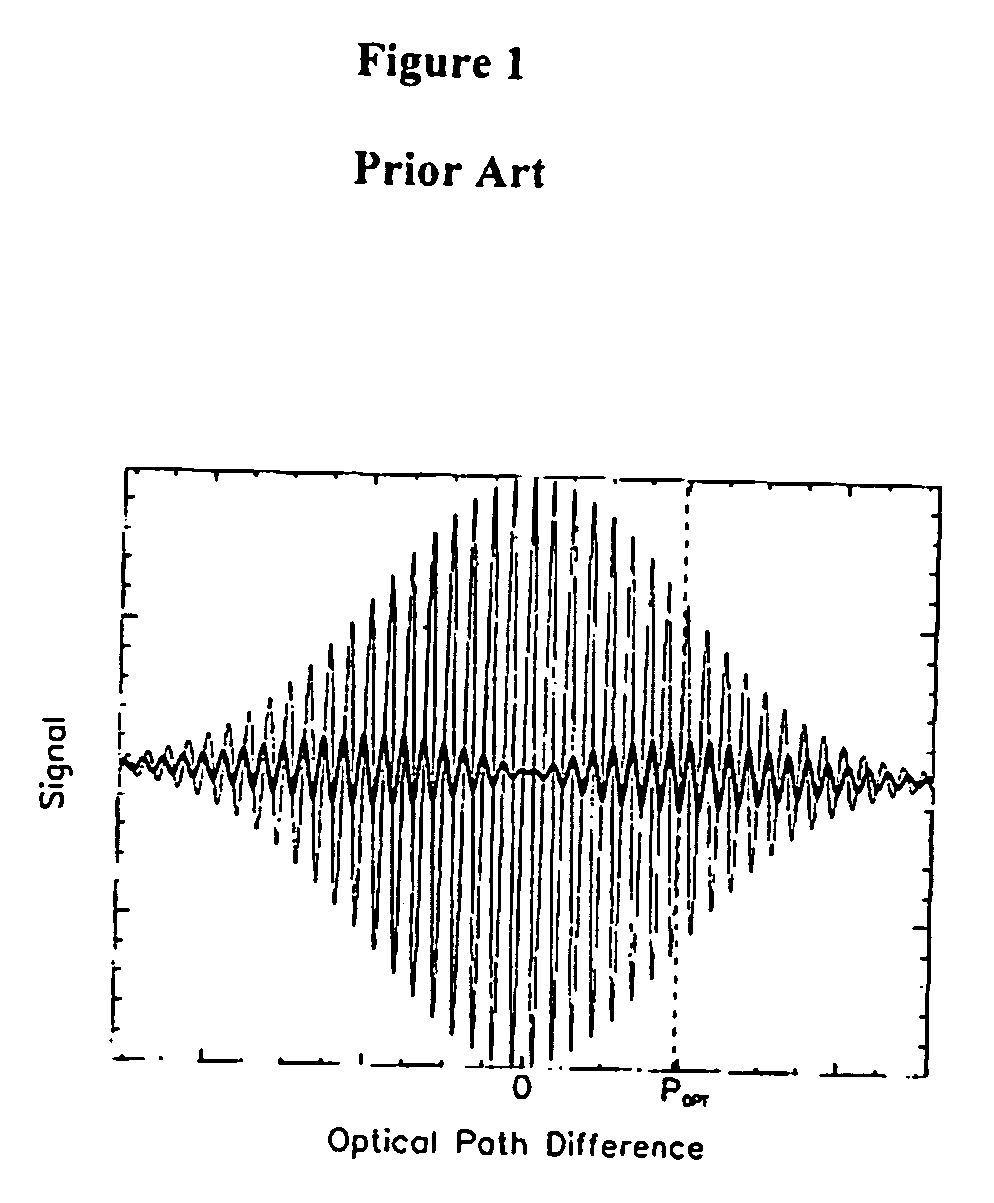Doppler asymmetric spatial heterodyne spectroscopy
a heterodyne spectroscopy and asymmetric technology, applied in the field of asymmetric spatial heterodyne spectroscopy, can solve the problems of reducing throughput, heavy instruments, and large size, and achieves small size and sensitivity, large interferometric throughput, and extending the capability to a resolving power
- Summary
- Abstract
- Description
- Claims
- Application Information
AI Technical Summary
Benefits of technology
Problems solved by technology
Method used
Image
Examples
Embodiment Construction
Definitions
[0033]As used herein, the term “field-widening prism” means a wedged, refractive element whose purpose is to increase the throughput of the system by reducing the path difference change between on and off-axis rays. Exemplary field-widening prisms include prisms typically manufactured from low-dispersion glass.
[0034]Referring now to FIG. 2, a Doppler Asymmetric Spatial Heterodyne (DASH) spectrometer 100 includes input optics, an interferometer and output optics. The input optics include an input aperture 102, and collimating lens 104. The interferometer includes a beam splitter 106, optional prisms 108 and 110, grating 112, and grating 114. The output optics section 121 includes focusing lens 116, collimating lens 118 and detector array 120.
[0035]In operation, input light passes through input aperture 102 and diverges to collimating lens 104. Collimated light λ1, includes an incident wave front 122. Collimated light λ1, is then incident upon beam splitter 106. Beamsplitte...
PUM
 Login to View More
Login to View More Abstract
Description
Claims
Application Information
 Login to View More
Login to View More - R&D
- Intellectual Property
- Life Sciences
- Materials
- Tech Scout
- Unparalleled Data Quality
- Higher Quality Content
- 60% Fewer Hallucinations
Browse by: Latest US Patents, China's latest patents, Technical Efficacy Thesaurus, Application Domain, Technology Topic, Popular Technical Reports.
© 2025 PatSnap. All rights reserved.Legal|Privacy policy|Modern Slavery Act Transparency Statement|Sitemap|About US| Contact US: help@patsnap.com



